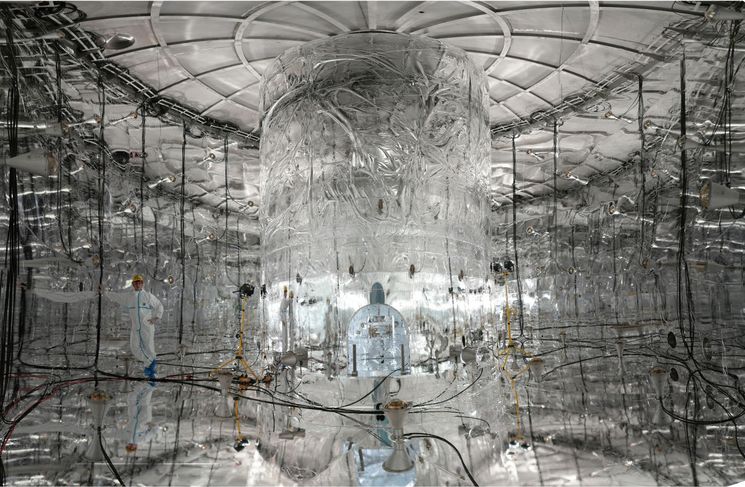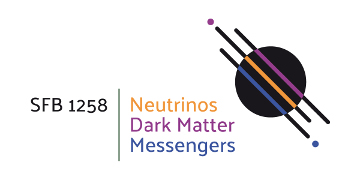Deciphering the fundamental properties of neutrinos
Neutrinos are the only charge-neutral fundamental fermions and they have very small masses. These special properties may well hang together in that neutrino masses quite plausibly are of Majorana type, violating lepton-number conservation, and then presumably connect to a sector of right-handes (sterile) heavy states. The decay of these heavy particles in the early universe could easily produce the cosmic matter-antimatter asymmetry (baryogenesis by leptogenesis). Moreover, one naturally wonders if low-mass sterile neutrinos exist, perhaps in the eV or keV range, as suggested by several experimental and cosmological hints. The N-projects of this SFB address such questions which are related to the particle physics nature of neutrinos, both form the experimental and theoretical perspective.
Neutrino flavor oscillations proves, even in the critical eye of the Nobel Committee, that these particles have non-vanishing masses. Yet the absolute scale remains unknown (but must be very small), only one of the relative orderings of three mass states is established, and the Dirac vs. Majorana question remains wide open. Building in the experience with the GERDA double beta decay experiment, we will advance the next generation search for Majorana masses, aiming at the one-ton scale with germanium or cryogenic techniques as a long-term perspective (Project N01). Likewise, we will develop key physics ingredients for the nascent JUNO scintillator detector and the foreseen PINGU infill of IceCube to enable the determination of the mass ordering in the 2020s (Project N02), a question also feeding back on the feasibility of the Dirac vs. Majorana determination.
On a much shorter time scale we will address the topical question of low-mass (eV or keV) sterile neutrinos with a very-short baseline oscillation experiment using a radioactive source at Borexino and by searching for multiple end points in the tritium decay experiment KATRIN (Project N04). While being much mire speculative, detecting such particles would spawn a change of paradigm in neutrino physics and for broader questions of particle physics and cosmology.
Sterile neutrinos can also play an intriguing role to achieve the deviation from thermal equilibrium in the early universe which is required to produce the matter-antimatter asymmetry within the paradigm of leptogenesis. In particular, we will advance the methodical frontiers of non-equilibrium thermal field theory which are at the heart of this topic and confront our results with neutrino data and phenomenological models (Project N06).
The smallest of neutrino masses, be they Dirac or Majorana, points to a fundamentally different origin compared to other particles. Studying phenomenological models from the bottom up (Project N03) or in a more unified picture form the top down in string theory (Project N05) will be complementary activities to provide the overall conceptual framework and to foster new ideas for observable signatures in the current and next generation experiments. Of course, the detection of sterile neutrinos would pose new theoretical challenges concerning the nature of neutrinos and the origin of their masses.



